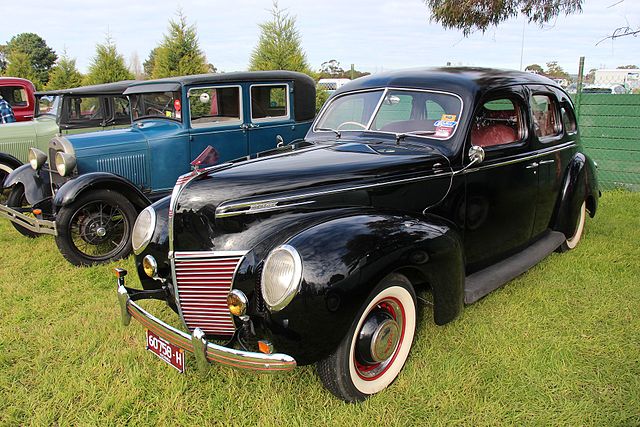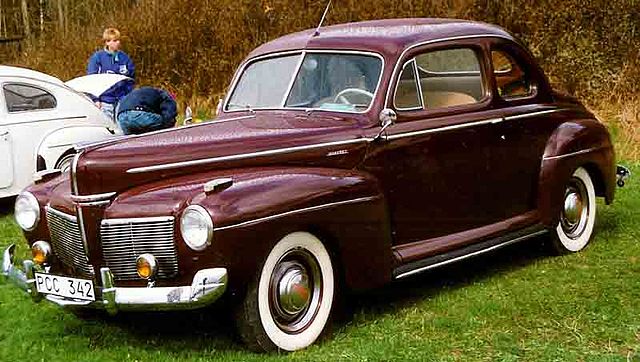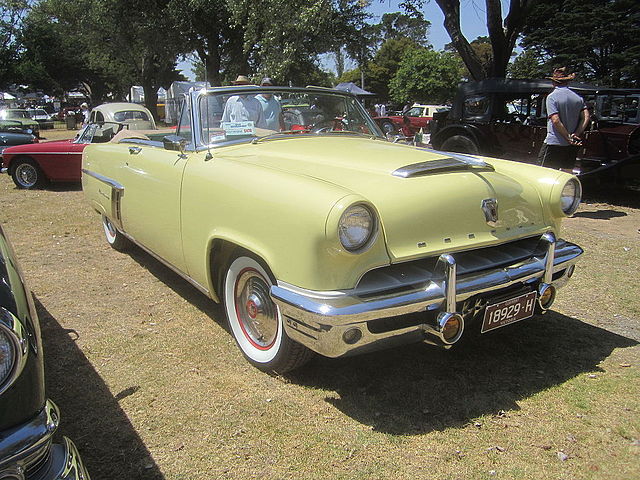
The Ford Mercury, introduced by the Ford Motor Company in 1939, marked the birth of a storied nameplate that bridged the gap between Ford’s affordable models and Lincoln’s luxury lineup.
This article delves into the history, design, and cultural impact of the first generation of the Ford Mercury, covering the period from 1939 to 1959.
The Birth of Mercury: A Strategic Move

Origins and Development
In the late 1930s, Edsel Ford, son of Henry Ford, envisioned a car that would fill the market niche between the popular Ford and the luxurious Lincoln. The result was the Mercury, named after the Roman god known for speed and mobility. This new brand aimed to offer consumers more features, better performance, and a stylish design at a price point that was higher than Ford’s but lower than Lincoln’s.
Launch and Initial Reception
The first Mercury model, the 1939 Mercury Eight, was unveiled to the public with much fanfare. It featured a more powerful V8 engine, improved interiors, and a longer, more elegant body compared to Ford models. The public reception was overwhelmingly positive, with the Mercury Eight praised for its blend of performance, comfort, and affordability.
Design and Engineering Innovations

Styling and Aesthetics
The Mercury’s design evolved significantly during its first generation. The 1939 model had a sleek, aerodynamic look with a distinctive grille and stylish chrome accents. Over the years, the design became more refined, with the 1941 model introducing a more rounded body and integrated fenders, setting the stage for post-war automotive design.
Technical Advancements
From an engineering perspective, the first-generation Mercury boasted several technical innovations. The early models were powered by a 239 cubic inch (3.9 L) flathead V8 engine, producing around 95 horsepower, a considerable amount for the time. The car also featured hydraulic brakes, an advancement that improved safety and handling.
Post-War Enhancements
After World War II, the Mercury lineup was updated to meet the changing tastes and needs of American consumers. The 1949 Mercury Eight, for instance, featured a completely new design with a lower, wider body, and an advanced independent front suspension system, enhancing both performance and comfort.
Market Position and Competition

Filling a Niche
Mercury was designed to fill a unique niche in the automotive market. Positioned between Ford’s utilitarian vehicles and Lincoln’s luxury offerings, Mercury provided an option for consumers who wanted more than just basic transportation but did not want to pay a premium for a Lincoln.
Competitors and Market Dynamics
During its first generation, Mercury faced competition from brands like Buick, Oldsmobile, and Chrysler’s DeSoto, which also targeted the mid-range market. However, Mercury distinguished itself through its combination of Ford’s reliability and Lincoln’s upscale features, making it a popular choice among discerning buyers.
Cultural Impact and Legacy

Mercury in Popular Culture
The Mercury became an iconic part of American culture, frequently appearing in movies, music, and television. Its sleek design and powerful engine made it a favorite among car enthusiasts and hot-rodders. The 1949 Mercury, in particular, gained legendary status, famously customized by car culture icon George Barris and featured in movies like “Rebel Without a Cause” and “Grease.”
Collector’s Item and Restoration Projects
Today, first-generation Mercurys are highly sought after by classic car collectors and restoration enthusiasts. Their timeless design and historical significance make them prized possessions, often showcased at classic car shows and events.
Evolution Over Two Decades

The 1939-1940 Models
The inaugural models were a hit, featuring distinctive designs and powerful engines. The 1939 and 1940 Mercurys set the standard for the brand, with improvements in body design, interior comfort, and mechanical reliability.
The 1941-1948 Models
The 1941 Mercury introduced a new design language with integrated fenders and a more streamlined body. Production was halted during World War II, but resumed in 1946 with refreshed designs that included a more prominent grille and improved interiors.
The 1949-1951 Models
The 1949 Mercury was a milestone, featuring a modern, slab-sided design and becoming a favorite among custom car builders. This era solidified Mercury’s place in American car culture, combining style with performance.
The 1952-1954 Models
This period saw Mercury models adopting a more substantial, chrome-laden look. Technological advancements such as the overhead valve V8 engine introduced in 1954 significantly boosted performance, keeping Mercury competitive in the evolving automotive market.
The 1955-1959 Models
The latter part of the first generation saw the introduction of even more luxurious features and designs. The 1955 Mercury Montclair, for example, offered power steering, power brakes, and a stylish two-tone paint scheme, reflecting the prosperity and optimism of 1950s America.
Notable Models and Milestones

The 1940 Mercury Eight Convertible
One of the standout models of the first generation was the 1940 Mercury Eight Convertible. This model featured a stylish, open-top design that quickly became a symbol of freedom and elegance. The convertible was equipped with the same powerful V8 engine as its coupe counterpart, but its unique design and limited production numbers make it a rare and highly collectible vehicle today.
The 1949 Mercury Custom
The 1949 Mercury Custom is perhaps the most famous model from the first generation. Its revolutionary post-war design included a new, wider body, integrated fenders, and a distinctive “Monarch” grille.
This model became a favorite canvas for hot-rodders and custom car builders, contributing to its iconic status. It was famously driven by James Dean in the movie “Rebel Without a Cause,” cementing its place in popular culture.
The 1950 Mercury Monterey
Introduced in 1950, the Mercury Monterey was a special edition model that showcased the brand’s move towards greater luxury and style. The Monterey featured a high-end interior with leather seats, upgraded trim, and a two-tone paint scheme that made it stand out from other models. It was available in both coupe and convertible versions, appealing to consumers looking for a blend of performance and luxury.
The 1954 Mercury Sun Valley
The 1954 Mercury Sun Valley was a groundbreaking model with a distinctive transparent “bubble” top. This innovative feature gave the car a futuristic look and provided an unparalleled panoramic view for passengers. Although the bubble top design faced practical issues like heat buildup inside the cabin, it remains a fascinating example of mid-century automotive experimentation and creativity.
The 1957 Mercury Turnpike Cruiser
The 1957 Mercury Turnpike Cruiser was designed with the future in mind, featuring cutting-edge technology and a unique design. It included advanced features such as a push-button transmission, a retractable rear window, and a futuristic control panel. The Turnpike Cruiser was also notable for its distinctive “jet age” styling, with tailfins and chrome details that epitomized the era’s fascination with space and aviation.
Conclusion
The first generation of Ford Mercury, spanning from 1939 to 1959, laid a solid foundation for the brand’s reputation for blending style, performance, and value. It captured the essence of a transformative period in American automotive history, navigating through pre-war optimism, post-war recovery, and the exuberance of the 1950s.
Even today, the first-generation Mercury remains a beloved classic, celebrated by car enthusiasts and collectors worldwide. Its influence on car design and culture is undeniable, making it a true icon of the automotive world. The Mercury’s journey from its inception to the end of its first generation is a testament to the visionary efforts of Edsel Ford and the innovative spirit of the Ford Motor Company.
